

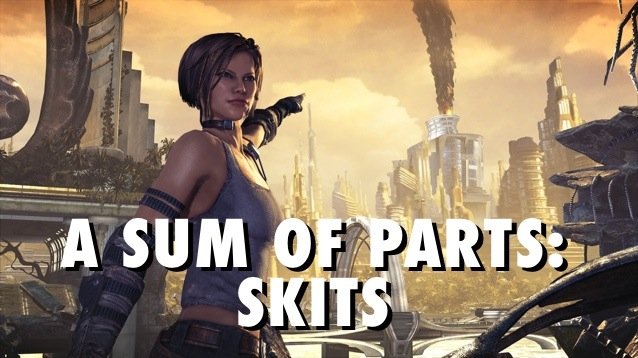
Humour is not an easy thing to make interactive. Hilarious moments certainly emerge often enough from our behaviour in gameplay all the time—be it a perfect plasma grenade stick in Halo or a zombie stumbling ass-over-head into a trash can in Left 4 Dead—and developers often create games with funny dialog or stories, but it is much harder to create a game where a played event is deliberately comical. In that weird border space of videogame play where we are both audience and actor, an interactive joke would require the player to be the comedian, the audience, and the poor ‘volunteer’ dragged on stage to be made a fool of all at once. The player needs to be in on the joke so they act accordingly, but somehow the punchline needs to be kept from them. Many games include humour; very few games deliberately embed humour within their actual playing.
Bulletstorm, however, manages a whole range of scripted, interactive humourous skits throughout its campaign. Little, few-second-long, childish things that the player simultaneously participates in, is the butt of, and the audience of all at once. By taking advantage of its game-within-a-game framing, Bulletstorm is able to create jokes both for and with the player.
My favourite example happens about halfway through the game. After walking through several dark corridors, Trishka and I enter a round, arena-like room with a pool of green acid in the middle and boxes of ammo scattered all around the place. It is the typical setup for a boss battle and, right on queue, a giant mutant steps in through a side door, pounds its fits, and roars.
I immediately know what I have to do: shoot the glowing bits and kick the monster into the acid three times, right? That’s how boss battles work.
But just as I aim down my iron-sights, thanks to the monster’s fist-pound, a segment of pipe falls off the roof and smashes it on the head, momentarily dazing it. Another falls, and the monster stumbles, trips, and falls cartoonishly backwards into the acid pit, dead.
The following moment of silence from the characters mirrors my own bafflement perfectly. For several seconds, I have no idea what happened. And then I burst out laughing. I realise how the game had set me up to expect one thing before it fooled me with the opposite. I had been duped, and it was an appreciation of how the game duped me that made it so funny. Everything from the layout of the room to the foreboding lead up to the ammo crates were intentionally placed for me to expect a boss battle.
But it felt interactive in the way that it played with my expectations, in the way that I braced my hand, perfectly ready for the boss battle that never happened.This is, for me, Bulletstorm’s best skit at the expense of the player, but certainly not the only one. You could perhaps even argue that this is not, in fact, interactive. Certainly, I didn’t press any buttons to make the monster fall into the acid. But it felt interactive in the way that it played with my expectations, in the way that I braced my hand, perfectly ready for the boss battle that never happened.
Towards the end of the game is a more definitively interactive skit. Hunt and Ishi are trapped in a room with a bomb ticking down. I find an air vent, crawl through it and follow a series of tunnels to escape. After a series of dead ends, I pop a vent, and jump up into the opposite side of the very bomb room I had just left. I have, literally, walked in a circle.
For this to work, Bulletstorm firstly makes the escape seem like an obvious one—the first-person shooter protagonist’s favourite, the old air vent. Then it disorientates me with the dead ends until I really don’t know which direction I am facing any more. When I inevitably find the way out (of course there is a way out, this is a linear shooter, after all) it isn’t until I jump out of the vent that both Hunt and I simultaneously realise the game has, deliberately, led us in a circle.
Other skits throughout the game are much smaller affairs. Trishka tells us to proceed quietly, and seconds later I kick down a sign to cross a chasm, setting off a domino affect that collapses a skyscraper two blocks away. It’s all cheap, stupid humour, but it’s all done by the game with an awareness of the player’s expectation and a knowledge of how to subvert that.
Last week I called Bulletstorm a videogame about videogames. It achieves this weird kind of meta-commentary, largely, by placing the characters into contexts where the kind of conventional videogame design decisions that usually pass without comment can be remarked upon by the playable characters in self-reflective ways. The fact that Hunt tries to solve every problem by kicking it, for instance, is unremarkably typical for any playable character, but in Bulletstorm it regularly leads to humourous responses from Hunt’s squad mates or from the environment itself.
Bulletstorm manages to do this by not just being a videogame about a videogame, but a videogame inside a videogame.Bulletstorm manages to do this by not just being a videogame about a videogame, but a videogame inside a videogame. The player is playing Bulletstorm, within which Hunt is playing his own sick, twisted game via the remnants of the previously failed Echo mission that left the dropkits scattered around the planet. Just like the player, Hunt himself is gathering points and spending them on upgrades. This allows a self-reflectivity where Hunt can comment on the conventional things the player does without ever having to actually break the fourth wall.
Various other games use the ‘game within a game’ framing device similarly. Perhaps most successfully is Portal, where the player is playing a character who, in turn, is ‘playing’ through a series of test chambers. Portal also uses the same frame device to incorporate the player’s inevitable actions into quick, memorable little skits. Most memorable of all is the saga of the companion cube, commenting on the first-person shooter protagonist’s most dependable ally. Portal 2 deploys similar humour at the start of the game where during the typical tutorial segment, the player is asked by Wheatley to press the jump button to say yes but, of course, they just jump, and Wheatly gets a little concerned about our mental condition. It’s trivial, silly, and quickly over—just like a good skit.
This kind of framing game-within-a-game allows for a certain kind of scripted humour both for the sake of and at the expense of the player. These skits are little, scripted things that maybe go for a few seconds at most. They are something that the player’s participation in is crucial for their execution, but which the player doesn’t really have any role in shaping and, at least in the case of Bulletstorm, has no choice to not participate in. The game sets it up; the player presses the right buttons; and the skit plays out. Just as the player is both audience and actor of more cinematic, authored games, so too are they both the audience of a skit’s joke and the butt of it. By having a self-aware but not fourth-wall breaking playable character, Bulletstorm is able to turn the most conventional, typical things into jokes just by messing with my expectations. It’s not the funniest game ever, by any means, but it is one of the few games where I feel like I have a role to play in the jokes being told.


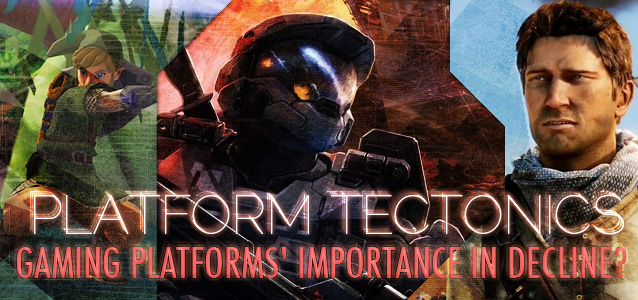
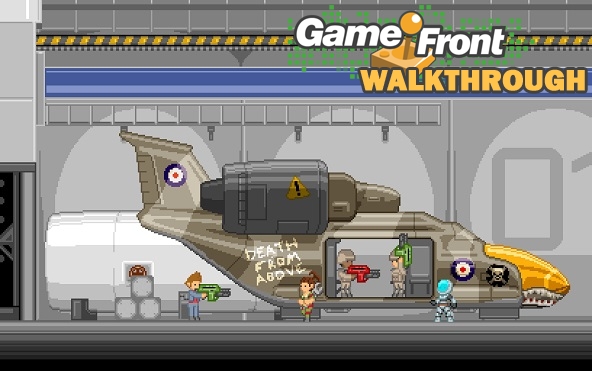
 GTA 5 Online Next Patch Release
GTA 5 Online Next Patch Release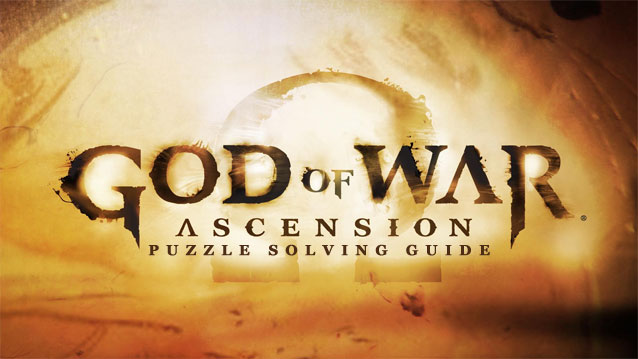 God of War: Ascension Puzzle Solving Guide
God of War: Ascension Puzzle Solving Guide Fallout 4: Clearing the Way walkthrough
Fallout 4: Clearing the Way walkthrough Reflect, Refract, And Be Puzzled: Lazors For Android Reviewed
Reflect, Refract, And Be Puzzled: Lazors For Android Reviewed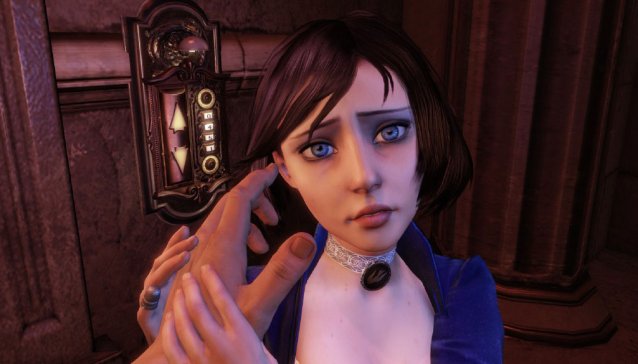 BioShock Infinite: Elizabeth, On The Back
BioShock Infinite: Elizabeth, On The Back